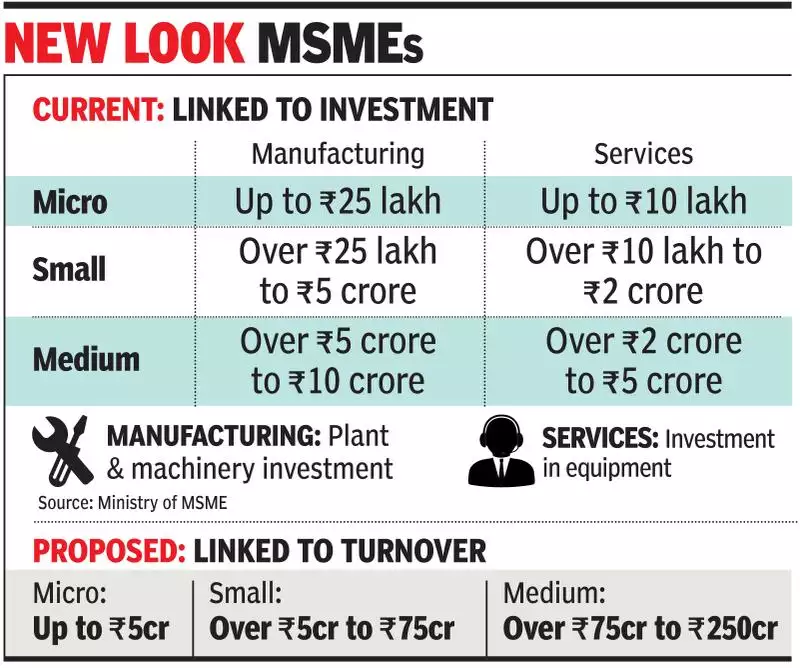Indian Economy
MSME Sector In India
- 24 Dec 2020
- 8 min read
This article is based on “Powering MSMEs in the next decade of growth” which was published in The Hindu Bussiness on 23/12/2020. It talks about the active areas, opportunities and associated challenges of MSME sector in India.
Micro, Small and Medium Enterprises (MSMEs) have always played a vital role in the Indian economy. Not only do the 6.3 crore MSMEs in India contribute one-third to the GDP of the country but also provide employment to large sections of society.
Moreover, the sector is a critical source of livelihood and provides nearly 110 million jobs. Therefore, with the current emphasis on Atmanirbhar Bharat Abhiyan, these MSMEs have become even more significant to India’s economic and financial strategy.
Acknowledging the importance of the sector, the government of India (in 2019) envisioned that the sector would account for half of India’s GDP and add 50 million fresh jobs over the next five years.
However, there were significant signs of a slowdown due to Covid-19 (on the demand side) and structural reforms (on the supply side) like GST (goods and services tax) rollout and demonetisation also had adverse effects on the MSME sector.
Issues Faced by MSME
The fact that MSMEs contribute 55% and 60% to the GDP of Germany and China respectively is a clear indication that India still has a long way to go in its MSME journey. Following are the are that ails the MSME sector:
- The Credit Conundrum: A concerning gap in India’s MSME sector has been the credit supply shortage to MSMEs.
- The formal credit available to this sector is ₹16 trillion. The viable credit gap is ₹20 trillion against a total demand of ₹36 trillion.
- Further MSMEs in India typically rely on NBFCs and MFIs for their financing needs, given the lack of access to the banking sector.
- With the NBFC sector enduring a liquidity crunch since September 2018, MSMEs were hard-pressed for money.
- Lack of Formalisation Amongst MSMEs: The main reason for this credit gap is the lack of formalisation amongst MSMEs.
- Almost 86% of the manufacturing MSMEs operating in the country are unregistered.
- Even today, out of the 6.3 crore MSMEs only about 1.1 crores are registered with Goods and Services Tax regime.
- The number of income tax filers are even less. As a result, Indian MSMEs’ credit requirement has been largely unmet due to limited availability and access to data and legacy underwriting methods.
- Technological Disruption: India‘s MSME sector is based on obsolete technology, which hampers its production efficiency.
- With the emergence of new technologies like Artificial Intelligence, Data Analytics, Robotics and related technologies (collectively called as Industry Revolution 4.0) is a bigger challenge for MSMEs than for organized large-scale manufacturing.
- Regulatory Cholesterol: MSMEs require a lot of government services and approvals, for which the entrepreneur has to run around various government departments.
- Getting construction permits, enforcing contracts, paying taxes, starting a business and trading across borders continue to constrain doing business.
- Regulatory risks and policy uncertainty in the past have dented investor confidence.
- Problem of Scale: Majority of the firms in MSMEs are micro-enterprises.
- The MSME space is virtually a micro space formed by a plethora of small and local shops and hence, scaling them up is a problem, especially when fund access is challenging.
Due to these issues, the productivity of small firms in Indian manufacturing is abysmally low relative to larger firms. This has created a conspicuous ‘missing middle’ in the size structure of firms, which deters employment generation and dynamism in Indian manufacturing.
Way Forward
- Developing Bond Market: With India’s bond markets starting to take shape, promotion of SME bond issuances can provide a fillip to debt capital markets participation of MSMEs.
- While such issuances will provide lower interest rates for MSMEs than other financial intermediaries charge, they will also be a viable high-yield instrument for informed and educated investors operating in the bond market.
- Creation of Independent Regulator: Given the growing importance of the data economy, it is paramount that the government creates an independent body which can advise and provide consultancy to MSMEs and enable them to win in this new, digital world.
- Reforming Labour Laws: Labour laws are not very conducive to MSME growth. They must strike the right balance between providing a growth-oriented framework for MSMEs to run in and providing sufficient protection for the rights of workers.
- Improving Regulation: While Ease of Doing Business has been a focus area, the reporting, approval and compliance requirements for small businesses continue to border on the higher side.
- If we truly want to create a country where MSMEs can influence our economic destiny, it is imperative that they are provided with a hassle-free regulatory framework which works for them rather than against them.
Conclusion
MSMEs are the backbone of a resilient national economy. Prioritising their development is critical to the future of the country. The government has come out with a variety of enabling mechanisms over the last few years.
India needs more such measures, especially in the current environment. The next decade will be the metamorphosis of India from an emerging power to an established economic powerhouse and MSMEs will be an important cog in the wheel on this journey.
|
Drishti Mains Question Prioritising the development of the Micro, Small and Medium Enterprises (MSMEs) sector is critical to the future of the country. Critically analyse. |
This editorial is based on “Pandemic resilience” which was published in The Hindu on December 23rd, 2020. Now watch this on our Youtube channel.







